From 7 to 100s! This Hero Brought Sparrows Back From Near-Extinction In His Village
Besides working relentlessly to save house sparrows in eleven districts of Odisha, Rabindra Sahu is also working for the conservation of Olive Ridley turtles since 1993
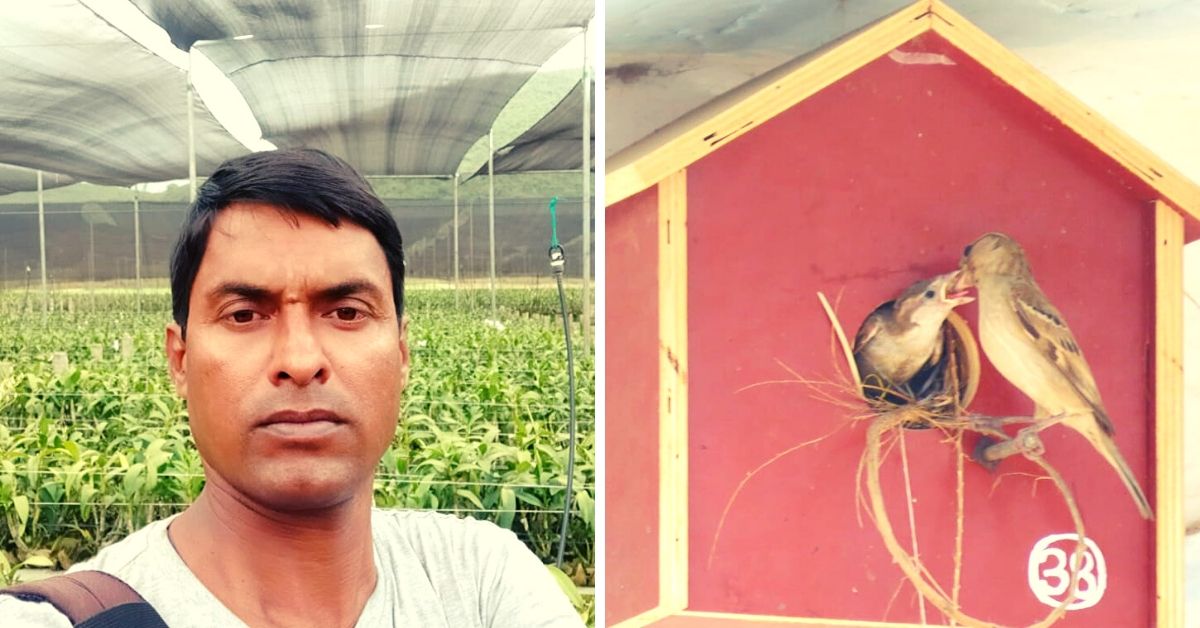
It all started over a cup of tea in 2009.
Rabindra Sahu was not surprised when his friend, Lingaraj Panda, a photographer, complained about how he was not able to capture a single sparrow in Puruna Bandha village in Odisha’s Ganjam district. This complaint soon led to a discussion on the steadfast decline in the population of house sparrows all over India.
“Since you are already working on the conservation of the Olive Ridley, why don’t you start a similar drive for endangered sparrows,” said Panda, talking about Sahu’s work as a researcher and conservationist.
It did not take Sahu long to make the decision. His mind began thinking of ways to bring the sparrows back. And the dedicated conservationist managed to do what once seemed impossible – increased the sparrow population in his village from a mere eleven in 2009 to over 300 in 2020!
Bringing Back the Sparrows – How It Began
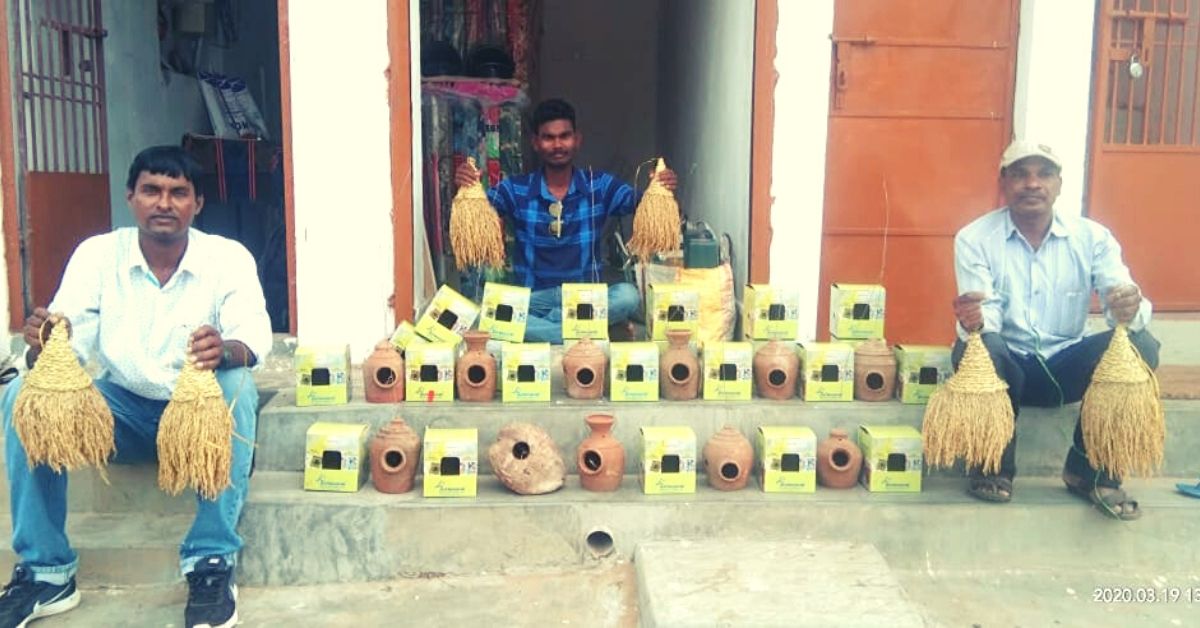
Like most of us, feeding sparrows was an integral part of Sahu’s childhood. Likewise, he too was a sad witness to the steady decline in the number of sparrows in the mid-2000s. In Sahu’s village, this was the phase when the government began constructing concrete houses to replace juggis (huts) made from hay.
“It was almost like a ritual to keep a few rice grains in a plate for the sparrows who made their nests on the roof of juggis. But the new houses were built in a way that left no room for the sparrows,” Sahu tells The Better India (TBI).
Additionally, other problems like the indiscriminate use of pesticides in fields and tree felling also pushed the sparrows to find a place far away from the village. “Pesticides kill all the insects that newly born sparrows feed on for the first couple of weeks. The green cover also came down with house construction activity leaving no place for sparrows to build their nest. Our homes in a way destroyed their homes,” adds Sahu. The conservationist knew that he had to put in a lot of hours first to understand the tiny bird’s way of life.
Documenting Feeding Patterns and Nesting Location of Sparrows
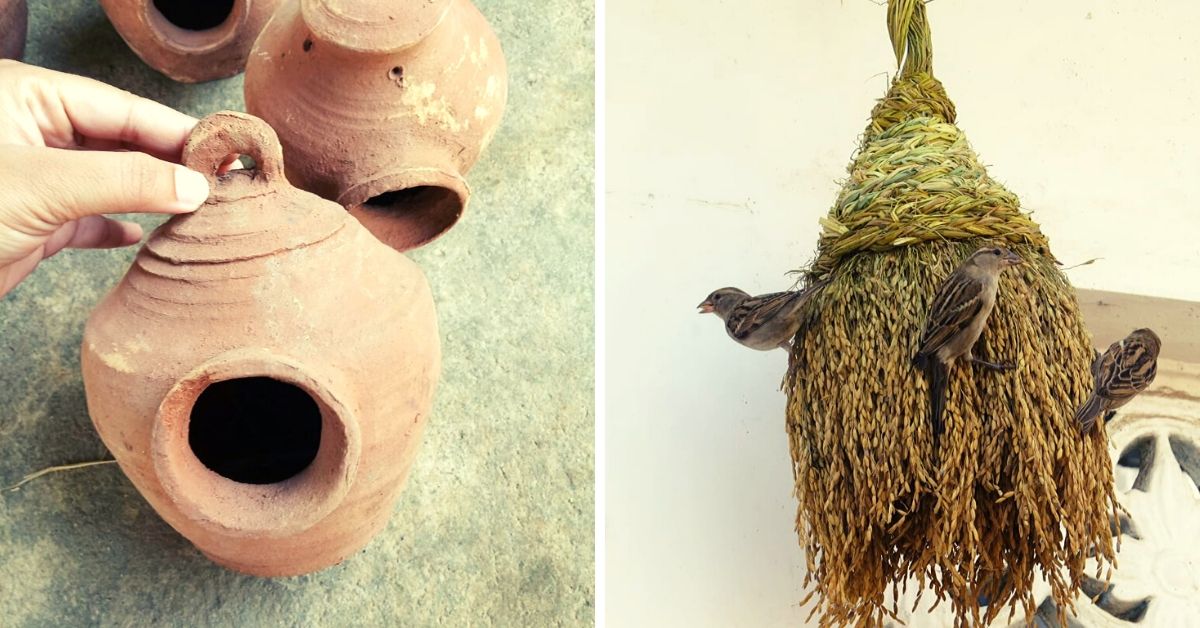
The documentation was a slow process. But Sahu had a lot of patience. After identifying the spots, Sahu, along with his friends, would keep rice, paddy and sprouts outside three times every day. A week later, the number of sparrows increased and by the end of the year, over 50 sparrows from the neighbouring villages made Purunabandha their home.
The next and most challenging step was to build houses for sparrows.
For the same, he roped in villagers and requested them to provide space, “My idea was to build artificial nests and distribute them for free. All a family had to do was tie pitchers from their roofs and leave some grains every day in the nest. I managed to get a few families on board for this.”
As Sahu did not have enough money to purchase wooden nests from the market, he came up with a creative and low-cost idea. He purchased 10 small earthen pitchers priced at Rs 10 each and made holes on one side for the sparrow to pick grains. He then tied them on people’s roofs.
For the next entire month, he strolled in the mornings and evenings around the ten houses to observe if the experiment was working. Interestingly, by the end of the month, he not only saw sparrows getting twigs and settling in but also saw two sparrows hatch inside.
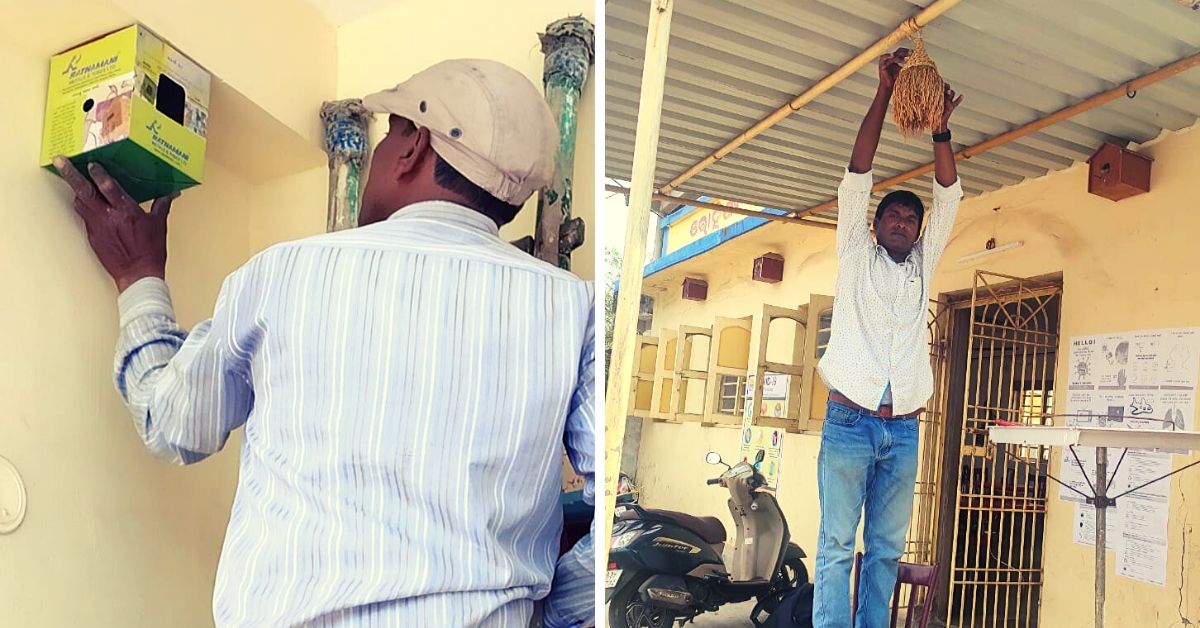
“I could not believe my eyes. Back then, I was no expert in bird conservation but I could see my mission taking a concrete shape. This little success encouraged me to continue the drive and engage more people,” says Sahu.
With time, he had more families coming forward to help. So he purchased more pitchers from his personal savings and some funds from his NGO, Rushikulya Sea Turtle Protection Committee (RSTPC) and distributed it for free to 200 families in his and neighbouring villages.
Sahu also used other materials such as plywood, bamboo and coconut to make the nest. After eleven years of relentless efforts, Sahu’s eco-initiative is now paving the way for humans and sparrows coexisting.
Naturally, his efforts caught the attention of the media and it helped him scale up the drive across eleven districts in Odisha. So far, Sahu has distributed more than 2,000 artificial nests for free to people who are passionate about sparrow conservation.
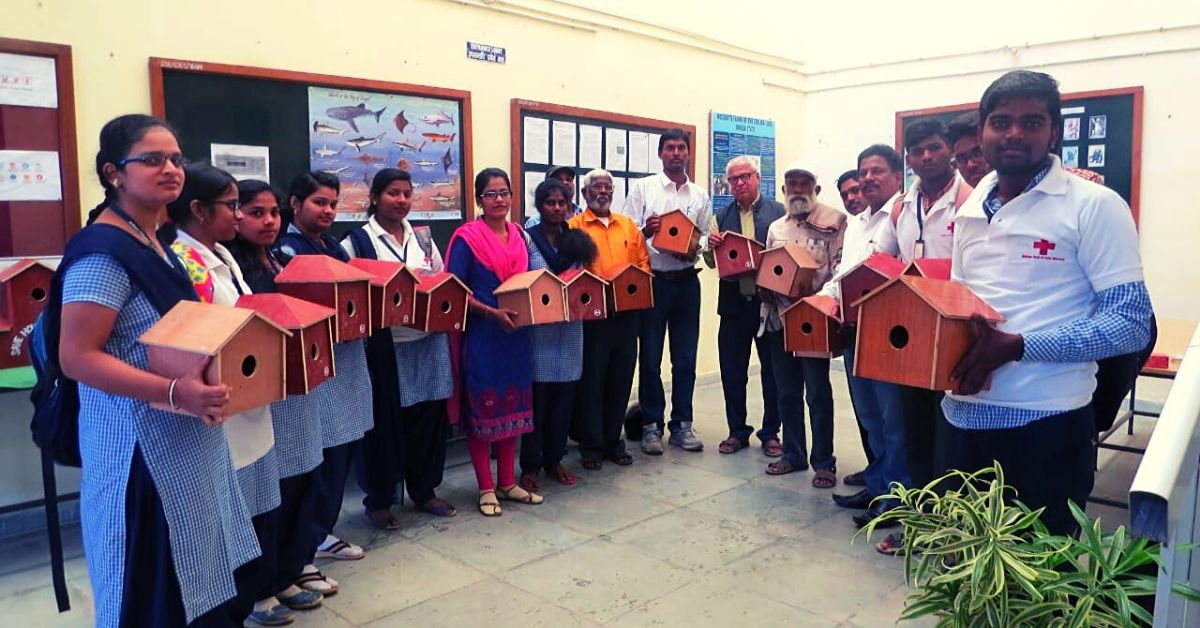
Even though Sahu earns Rs 30,000 per month through his research stints and his NGO, he does not mind spending Rs 80-300 per nest if it means bringing back the endangered species. Where he had to plead with people to fix an artificial nest at their house, people now call him asking for his nests.
Conservation Efforts for Olive Ridley Turtles
Sahu’s love and compassion for birds and animals dates back to 1993 when he had just completed the tenth grade. That year, biologists from the Odisha Forest Department and the Wildlife Institute of India (WIF) discovered that Rushikulya beach is an arribada (mass nesting) site of olive ridley turtles. However, instead of being happy at the find, the biologists were concerned.
They discovered how locals were eating eggs of the turtles. And beside saving them from people, the turtles also needed protection from wild animals.

To spread awareness about their impending extinction, the WIF trained a few school students in the conservation programme and Sahu was one of them.
“From educating villagers about the turtles to providing protection and tagging the turtles, I worked with the WIF team for nearly a year. The kind of work I was doing gave me immense satisfaction and I knew I wanted to do this all my life,” says Sahu.
Every nesting season, Sahu and his team of RSTPC scare away jackals and eagles. They also collect the eggs and bury them in fenced hatcheries created on the beach. Furthermore, after 45-days of incubation period, they leave the turtles in the water. The NGO also regularly conducts beach cleanup drives to ensure turtles are dissuaded by any waste.
There were around 30,000 turtles when Sahu first witnessed nesting on the beach and over the years the figure has gone into lakhs. In fact, in early March this year, 3.5 lakhs turtles were spotted on the beach, claims Sahu. Along with the District Forest Department and WIF, Sahu has played an integral role in protecting the turtles through various measures.
And for everything, all his accomplishments and accolades, Sahu credits his first project.
“If it hadn’t been for this conservation project, I would not have dedicated my life to animals and birds. It taught me the importance of all living creatures. It encouraged me to educate others and create a harmonious atmosphere for all. I hope to continue my endeavours till my final breath,” Sahu concludes.
Also Read: Chirps Galore: Awesome Varanasi Family Open Their Home To 2,500+ Sparrows!
(Edited by Saiqua Sultan)
Like this story? Or have something to share?
Write to us: [email protected]
Connect with us on Facebook and Twitter.
If you found our stories insightful, informative, or even just enjoyable, we invite you to consider making a voluntary payment to support the work we do at The Better India. Your contribution helps us continue producing quality content that educates, inspires, and drives positive change.
Choose one of the payment options below for your contribution-
By paying for the stories you value, you directly contribute to sustaining our efforts focused on making a difference in the world. Together, let’s ensure that impactful stories continue to be told and shared, enriching lives and communities alike.
Thank you for your support. Here are some frequently asked questions you might find helpful to know why you are contributing?


This story made me
-
97
-
121
-
89
-
167











